IEC’s approach to transformation in education is best understood as a framework that can be applied across different contexts. The core principles and values embedded in the change framework manifest in the implementation process.

The work of IEC across different contexts derives itself from these principles:
![]()
These principles and values form the core of Quality Learning Initiative(QLI) and Decentralization of Education Governance(DEG). In every geography, the State teams lead these programs in a decentralised manner, contextualising them to the needs and culture of the stakeholders.
IEC is currently working across 8 states in India reaching more than 107000 teachers and 2832000 children in 20000 rural primary government schools
Andhra Pradesh
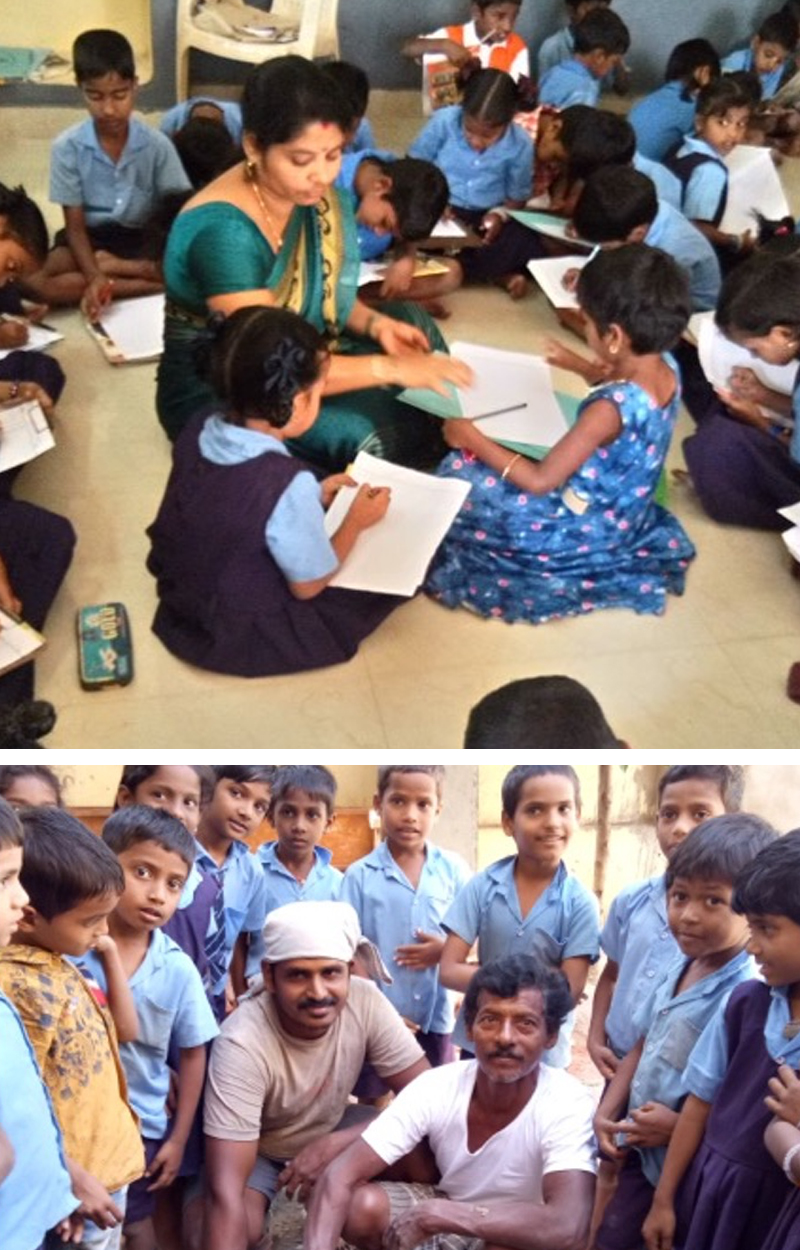
The overall tribal literacy rate in the state is 48.9 % as per 2011 census data, it has seen a growth of more than ten percentage points between 2001 and 2011 but still remains lower than the national average.
In 2014-15, IEC partnered with Integrated Tribal Development Agency (ITDA) to implement the Quality Learning Initiative across one cluster in Paderu, a tribal area within the Vishakhapatnam District.
The impact of the work motivated ITDA, Paderu to expand the implementation of QLI to 37 Clusters. The focus of the project was to bring quality learning in the 935 schools in 35 clusters of 5 mandals namely Munchingiput, Pedabayalu, Paderu, G.Madugula and Hukumpeta and 17 schools in 2 clusters of Pedalabudu Gram Panchayat of Araku valley Mandal in the area of ITDA, Paderu, and Visakhapatnam reaching 24000 students and 1267 teachers.
An external impact evaluation study was conducted as part of the project implementation. The study showed that in the schools where Quality Learning Initiative was implemented, there was statistically significant improvement in the learning levels of students across Math and Telugu as compared to non-program schools.
This led to the spread of the program to two zones of Municipal Corporation of Vishakhapatnam with 43 primary government schools reaching 5720 students in November 2017. During a period of three years, considerable changes were observed in more than 50 percent teachers regarding their practice of formative assessments and facilitation of diverse learning environments in their classrooms.
Presently the Programme has been closed in Andhra Pradesh.
Bihar
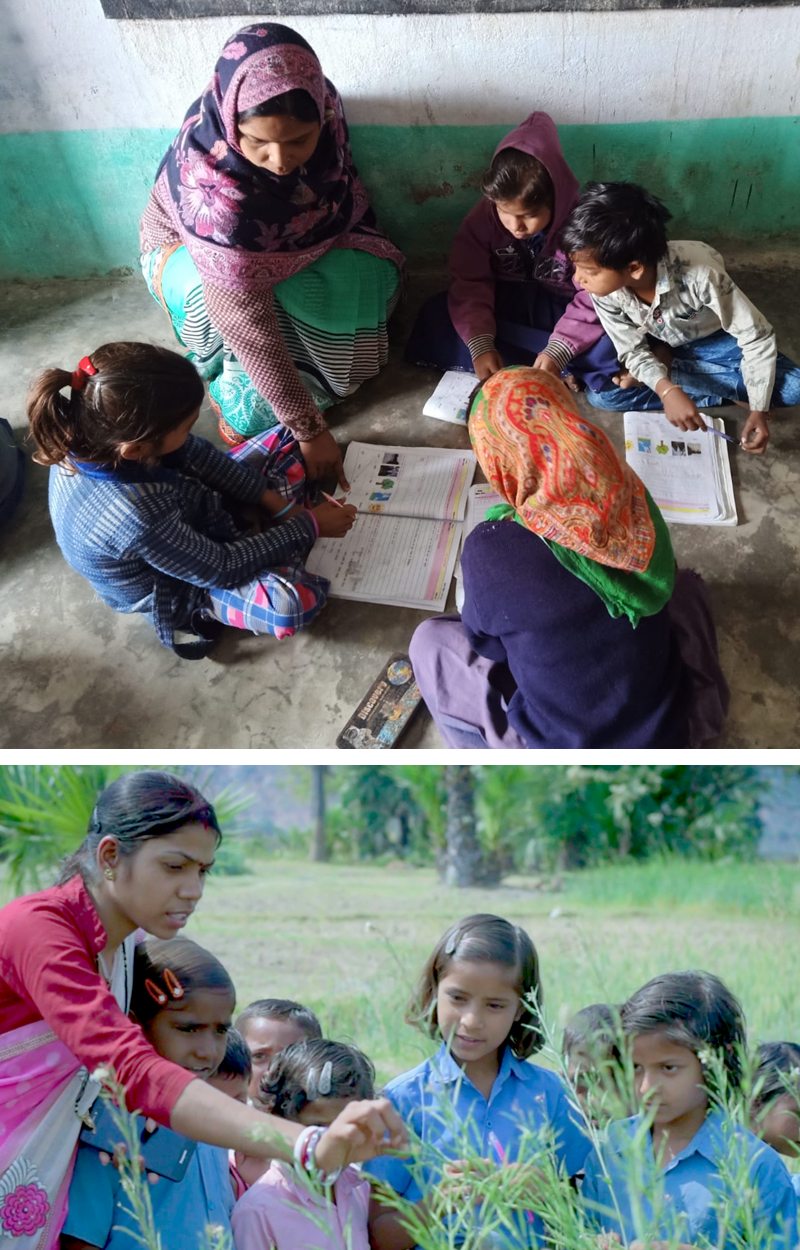
There are more than 79,000 elementary schools in Bihar. And the state has the highest proportion of children as part of total population when compared with rest of the states. There is an acute shortage of professionally trained teachers. Data shows that only 52% of teachers are professionally trained and qualified.
Given the challenging context of the status of public education in Bihar, IEC has directed its efforts towards empowering teachers through the monthly teacher collective meetings across 4 clusters in Jehanabad District(3) and Madhubani District(1) reaching 2033 students and 73 teachers.
Through this, 50 percent of the teachers across the working clusters have transitioned to facilitating learner centered classroom practices, improving the engagement of students in the learning process.
Given the context of high Pupil to Teacher ratio in the 4 working clusters, teachers have initiated changes in their classroom practices by enabling peer learning, which has been effective for student learning.
In the 3 working clusters of Jehanabad, a distinct change in learning processes was observed across many schools which led to students shifting from private schools to government schools. The teachers felt motivated by this impact and have continued to improve their teaching-learning practices.
Teachers value the monthly collective process as it enables them to share their views and makes them feel heard and valued.
Chhattisgarh
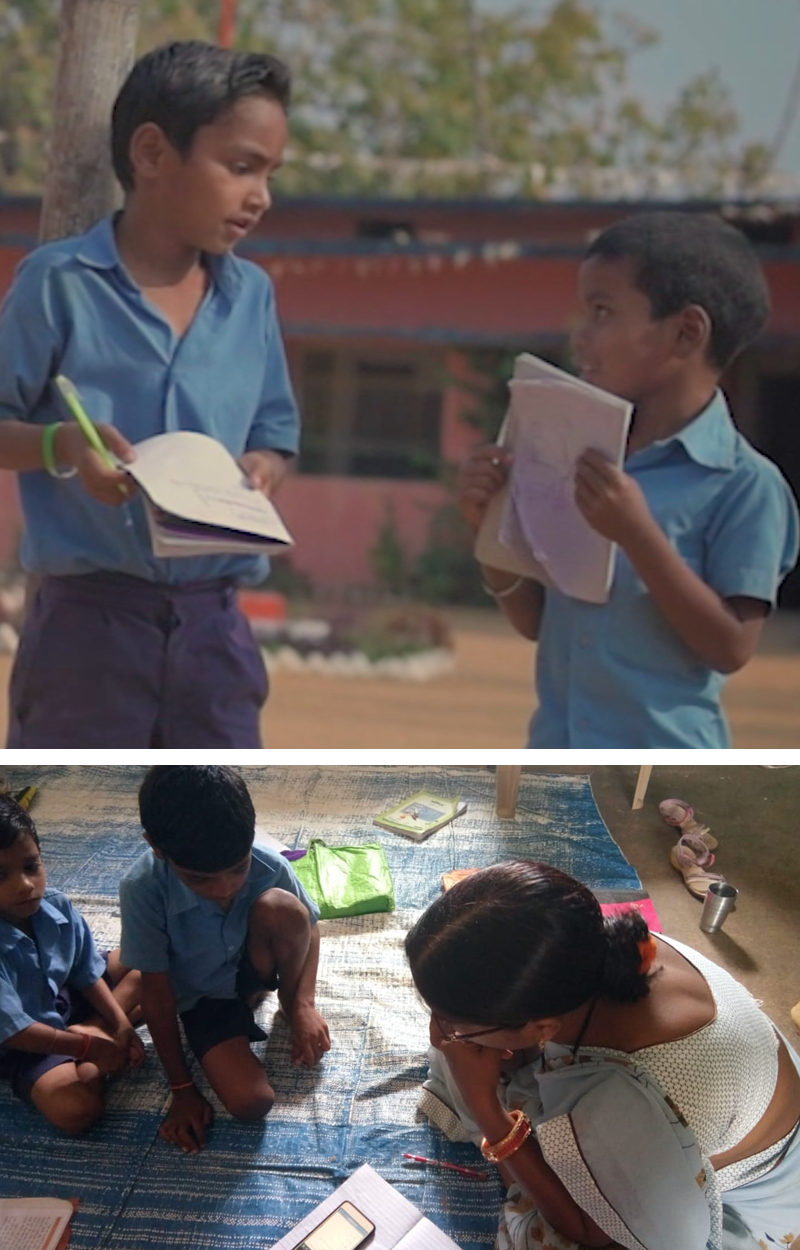
The average literacy rate in the State is 70.3 per cent, with the corresponding figures being 59.1 per cent for Scheduled Tribes. The literacy rate among females in the Scheduled Tribals is abysmally low at 48 percent.
Several research studies have pointed to the difficulties that tribal students face in the school environment due to language and pedagogy adopted by teachers where there is a disconnect between students’ real lives and classroom learning.
Given this context, IEC’s work in 42 clusters in Bakawand Block of Bastar District and 3 Clusters in Mahasamund District is towards strengthening student-teacher relationship by enabling teachers to facilitate classroom processes in a manner where students have opportunities to share in their own language about their existing knowledge. This also supports students to connect their experiences with classroom processes.
The work began from one cluster in Bakawand Block and was scaled through government support and ownership across the block due to impact witnessed by the teachers, Cluster Academic Coordinators(CACs) and Block Level Officials across multiple classrooms.
They observed that students become more engaged in classroom processes where teachers facilitated learning by focusing on conceptual understanding and creating opportunities for students to connect with their immediate environment through learning tasks. The individual portfolios for students have also been provided through government support across the 45 clusters reaching 15815 students.
In 2018, Gooru Navigator, a tech platform for tracking individual student progress on competencies was piloted in two clusters of Mahasamund District. IEC Team through support from SCERT facilitated teacher workshops to create a competency framework for Math, based on NCERT defined learning outcomes. The use of Gooru Navigator was initiated to strengthen formative assessment practices of teachers.
IEC has also partnered with Higher Education Project in the State to enable career counselling for students in high schools. More than 30 domain based career booklets have been designed and printed for supporting teachers and students in this regard. The focus is towards empowering teachers to become career counsellors for students through this project.
Meghalaya
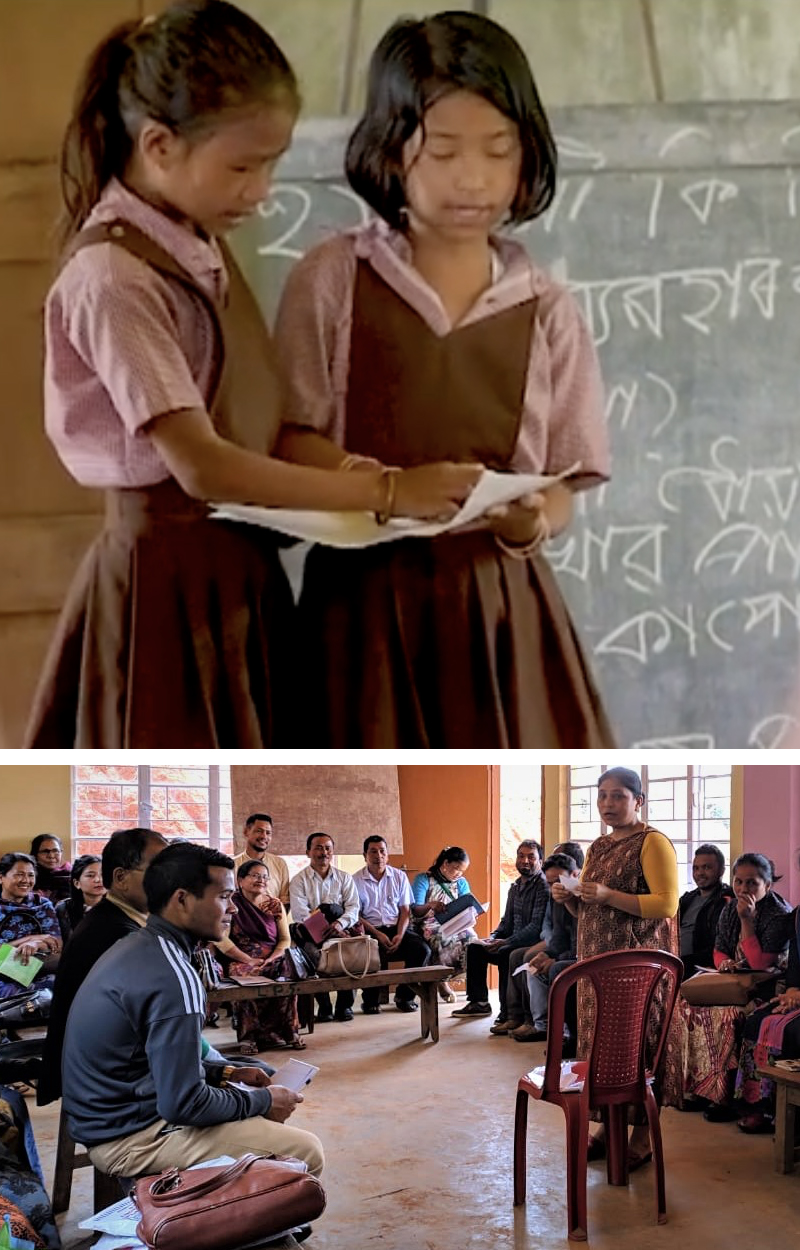
Several issues plague the government school system in Meghalaya, foremost being infrastructure and lack of trained teachers.
According to NAS 2017 Data, Grade 5 results indicate that only 42% students in Math and 47% students in language and EVS could answer grade level questions successfully. There is further disparity with Garo Hills area achieving the lowest ranking in learning indicators, followed closely by Jaintia Hills. Schools in Khasi Hills perform better as compared to the other two.
IEC through its work in four blocks (Mawkynrew, Saipung, Resubelpara and Betasing) of Meghalaya reaches rural primary government schools across Garo, Khasi and Jaintia Hills.
The work was initiated in in Myllieum Cluster in Khasi Hills and Resubelpara Block in Garo Hills , where the impact of the program led to sustainable change in teaching-learning practices. The schools in Myllieum Block incorporated the qualitative assessment tool shared by IEC in their report cards.
In Resubelpara, the use of individual student portfolios initiated the practice of formative assessments. The collective meetings enabled teachers to rethink the teaching-learning process by focusing on development of abilities in students.
The impact created through this initial program compelled the Meghalaya Education Department to scale the learning approach across 4 Blocks reaching 646 schools and 19657 students in 2018.
The approach has been scaled with a focus on empowering Cluster Resource Coordinators to facilitate the Teacher Collectives in their respective clusters.
In Saipung Block, which comprises of schools in very remote areas, this is the first time a development program has been initiated for improving education in the area, especially in terms of providing field support to teachers.
Telangana
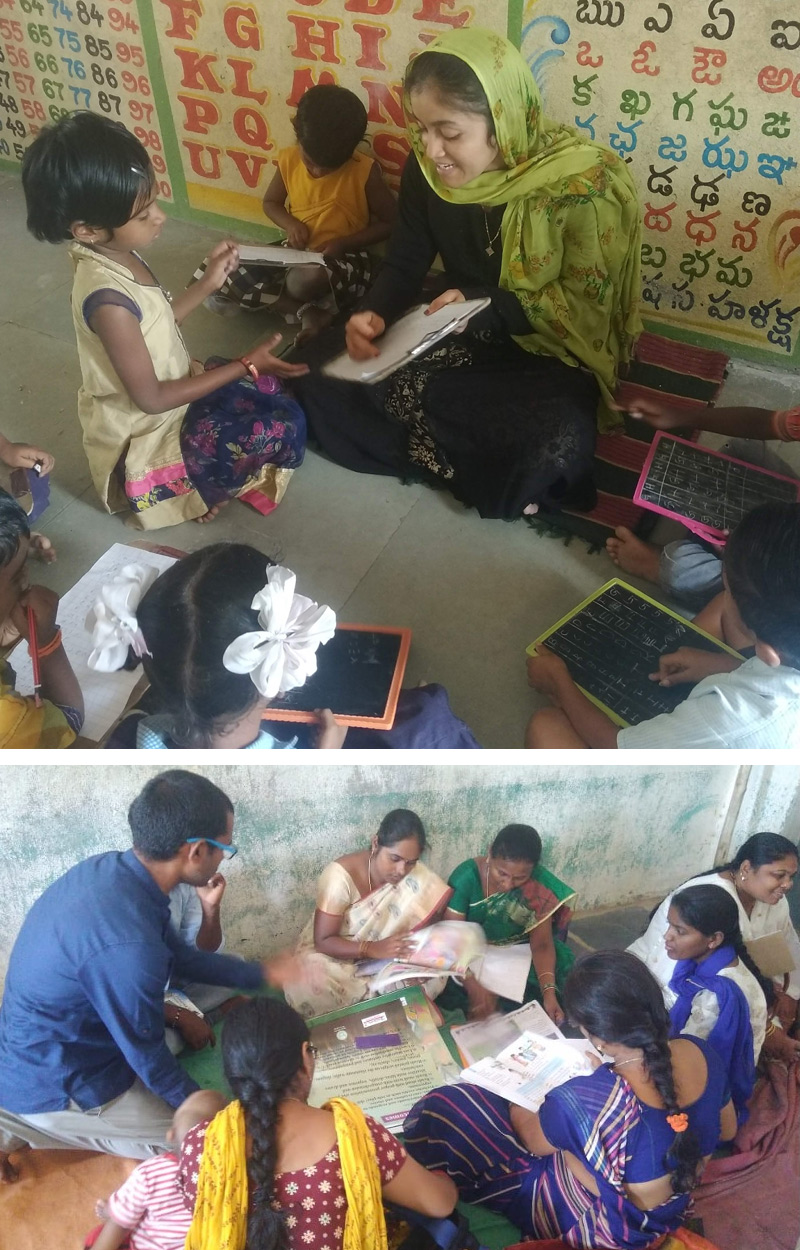
IEC works in two of the most backward districts, Narayanpet and Gadwal of Telangana in terms of socio-economic indicators. IEC started the program in three clusters namely Gattu, Dharur & Talakonda palli of Gadwal District.
All these three clusters are very remote, draught prone areas. Cotton cultivation is one of the main occupations which employs children from the region as well. As of 2011 Census of India, the district has a literacy rate of 53.41%. Literacy rate of Gattu is 37%
The work in the state is supported by the District Administration and implemented in partnership with Mandal and Cluster Officials who take ownership for the program.
The implementation of the program in Telangana is facilitated by Cluster Resource Coordinators, School Complex Headmasters, Mandal Education Officers and a key resource group of teachers from different clusters who facilitate the Teacher Collective meetings in their respective clusters/school complexes.
A key aspect of the implementation is the development of learning tools during the collective process which are used by teachers to provide each student in their classroom with a learning task based on their current learning levels. This has led to improvement in student learning levels with more than 60 percent students attaining grade level competencies at the time of primary school graduation.
The learning progress made by students was made evident through external impact evaluation studies which were conducted for both Mahbubnagar and Gadwal Districts.
The results indicated that learning gains were made by students in attaining grade level competencies and the key difference between students from schools with IEC intervention was their performance in advanced skills in both Math and Telugu.
These students could solve analytical problems successfully while students from non-intervention schools could answer direct formulae-based questions but not solve complex questions.
Tamil Nadu
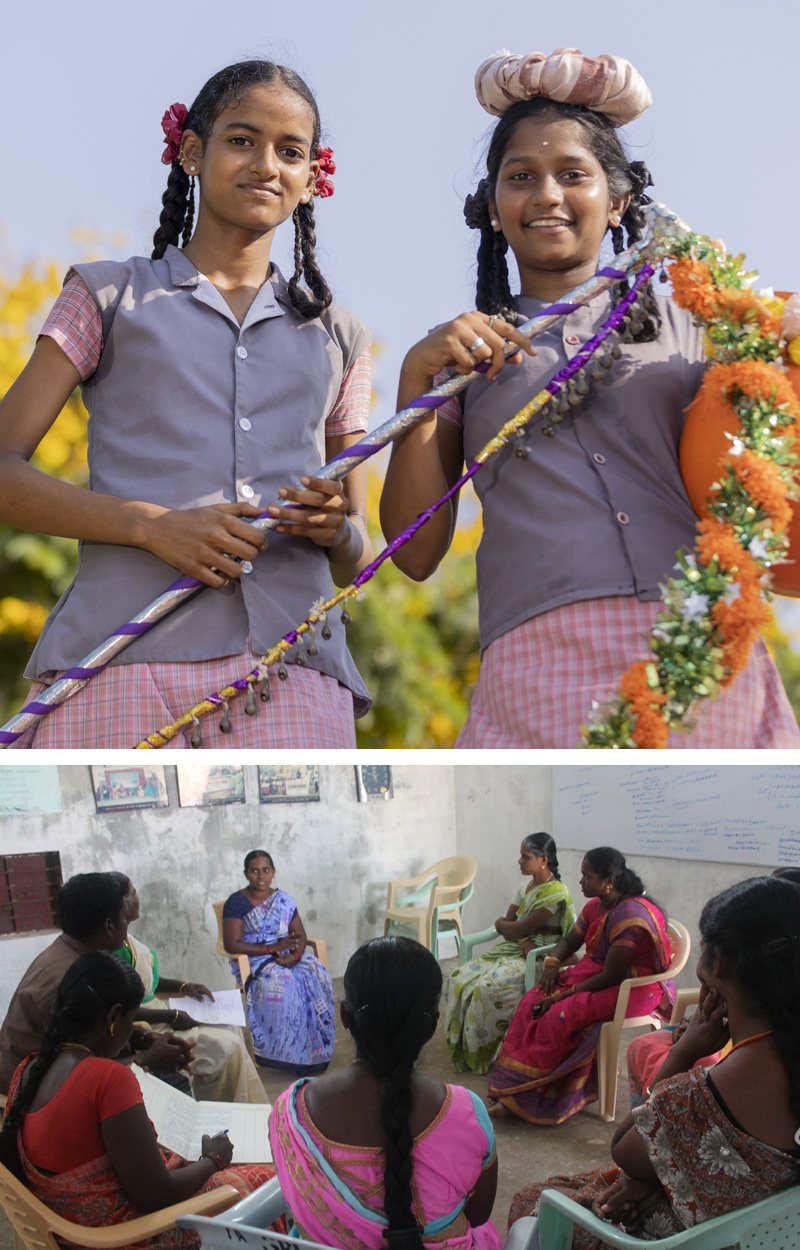
IEC has been identified as a core member of the Project Management Unit of Samagra Shiksha for improving quality education in the State of Tamil Nadu.
The state has initiated this project with a focus on improving learning outcomes of students as despite being ranked high in the Performance Grading Index of Ministry of Education, the students learning outcomes remain unsatisfactory.
The experience of IEC on working on education transformation has been instrumental in its selection. IEC is currently engaged in strengthening the School Management Committees across the state.
The insights from implementation of Decentralization of Education Governance approach are being used to design a state-wide implementation process for enabling School Management Committees to take ownership of Panchayat Union Schools and create a vision for learning for all the children within the community.
Simultaneously, IEC is also engaged in supporting Samagra Shiksha to ensure the availability of high-quality e-content for all government school students, designing an Art and Culture program for students across the state, and an innovative STEM education program for middle and high school students.
Uttarakhand
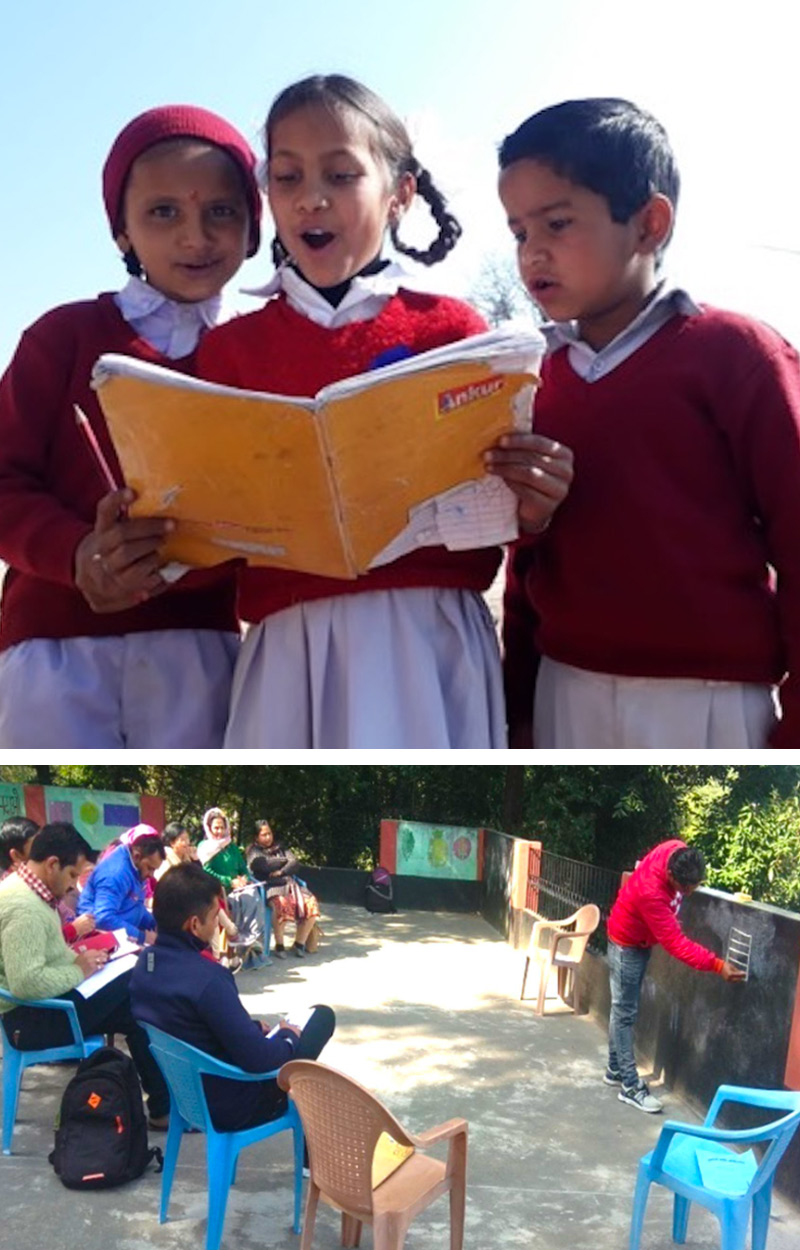
IEC in collaboration with Samagra Shiksha in Uttarakhand has been working towards institutionalizing the learning approach across two blocks, Garud and Ramgarh in Bageshwar and Nainital District respectively.
The initiative reaches out to 7 clusters of Garud block of Bageshwar district and in 6 clusters in Ramgarh Block of Nainital District covering a total of 13 clusters and reaching 4687 students and 405 teachers.
IEC’s work in Uttarakhand had begun with a few clusters each in the two blocks and through the evidence of the effectiveness of the approach in transforming learning, the work was scaled through partnership with Samagra Shiksha, Uttarakhand.
To institutionalize the process of Teacher Collectives, workshops have been organized with District Institute of Education and Training in both Nainital and Bageshwar District to share about the Teacher Collective Approach.
In Uttarakhand, due to the hilly regions, the enrolment of students is quite less across most of the schools where IEC is working.
Therefore, usually a single teacher teaches multiple grades. In this context, the teachers have found the integrated approach to learning suitable as it enables them to introduce a concept relevant for all the grades and then focus on developing grade level skills in every child.
The monthly planning process in the collective meetings gives them an opportunity to plan for every child in their classroom. Due to this, teachers have high ownership of the Teacher Collectives process and in 75 percent of the clusters, the meetings are co-facilitated by the teachers themselves.
To initiate formative assessment practices in the state, individual student portfolios have been provided to schools and across 50 schools, teachers use the portfolios for tracking student progress and present student activities from the portfolios in the monthly collectives for evidence-based sharing.
IEC has also made efforts to engage the community in the learning process. Block level Panchayat Samiti meetings have been facilitated for initiating community participation.
Uttar Pradesh
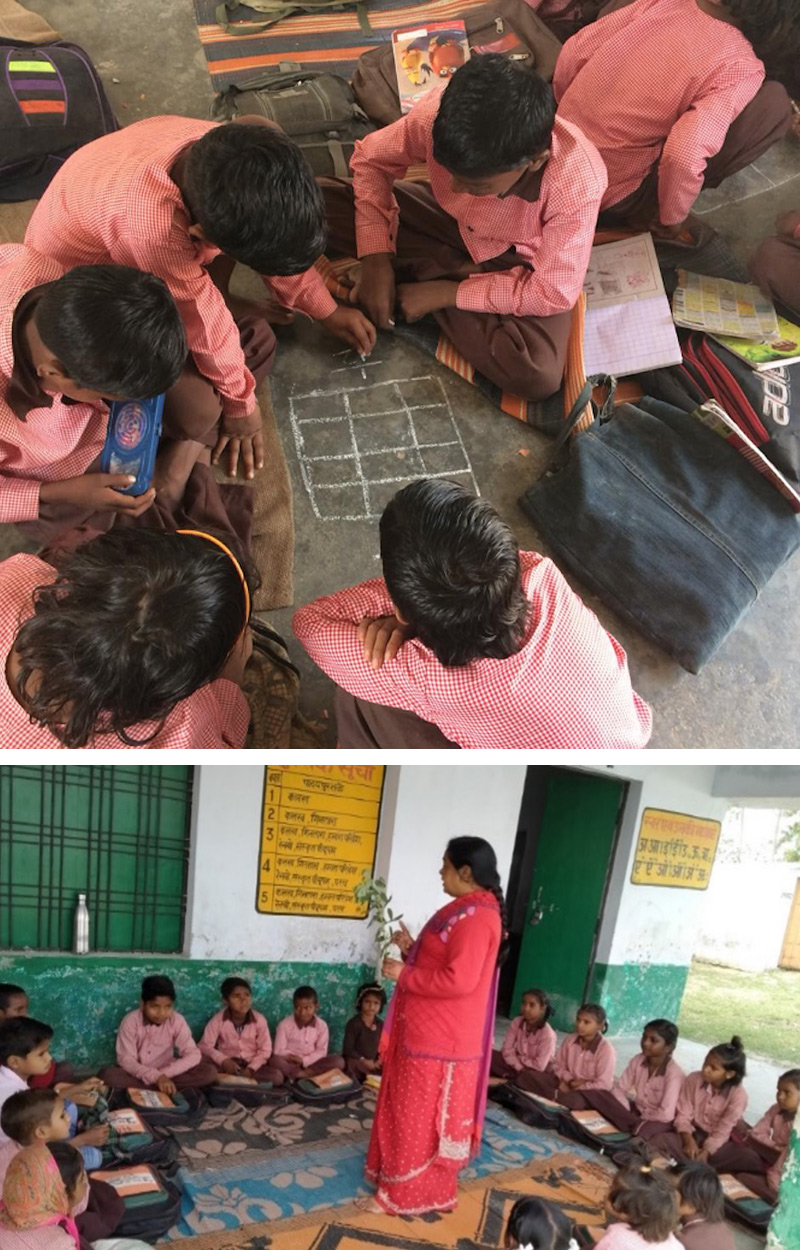
The state of Uttar Pradesh has the highest enrolment at primary level of 2,58,06, 929 students studying in 1,69,857 government and aided schools. The state also has a high pupil-teacher ratio at primary level with 39 students for every teacher and more than 20000 schools are Single-Teacher Schools.
According to NAS 2017, only half the students graduating primary school are able to answer grade level questions in Math and Language correctly. The worrying data is that only 3 percent teachers reported to understand the curricular goals prescribed by the State Education Department and only 5 percent were highly satisfied with their jobs.
In this context, IEC has been working in 13 districts across the State. In the last two years, IEC has been working with the State Education Department to institutionalize the Teacher Collective Approach across 18000 primary government schools in the 13 Districts with 1581 clusters.
Through its work in 35 Clusters, IEC advocated for the importance of teacher collaboration and its impact on improving student learning outcomes. This has now been taken forward by the State Education Department statewide..
IEC has been working closely with the District Institute of Education and Training (DIET) across the 12 Districts for improving the effectiveness of the monthly Cluster Academic Meetings.
IEC is also working on strengthening community ownership of public schools across Baghpat and Sravasti District. This has resulted in panchayats taking the responsibility for improving infrastructure in schools within their jurisdiction.
Further through Block Panchayat Meetings, Standing Committees for Education have been formed and work is ongoing to strengthen them further. During the pandemic, Gram Panchayat Members took the initiative to print workbooks for children and ensured that every child’s learning in their village continues despite the school closures.
